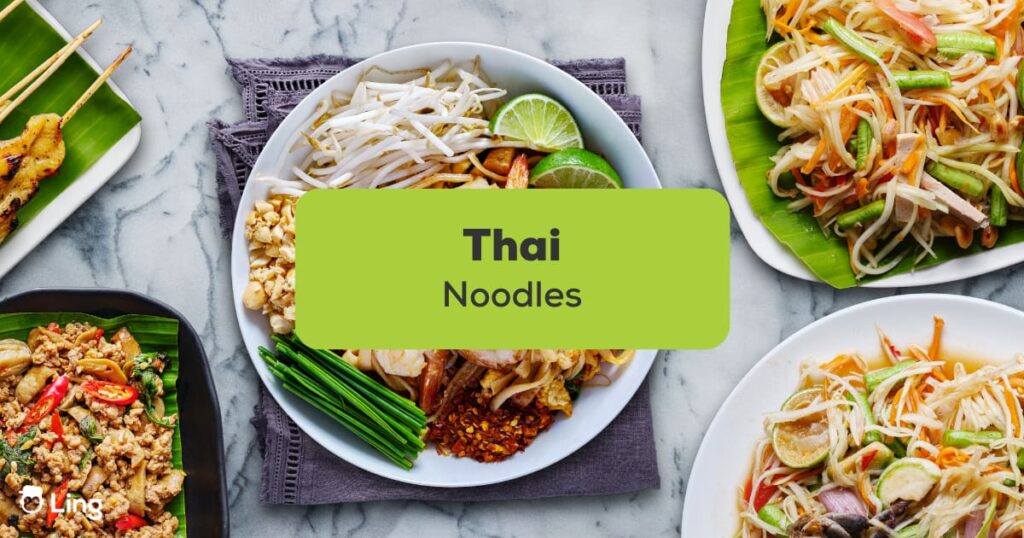When it comes to Asian cuisine, there are different types and cooking techniques when it comes to noodles. In fact, even their meal presentation for such is always different. Aside from the delicious soups and hearty curries, there is one meal that you’ll have to try – the Thai noodles.
In this post, we will be learning about Thai noodles and what makes them truly unique- from their origins to the cooking process, and we will discuss everything there is to know about this topic. Let’s get started!
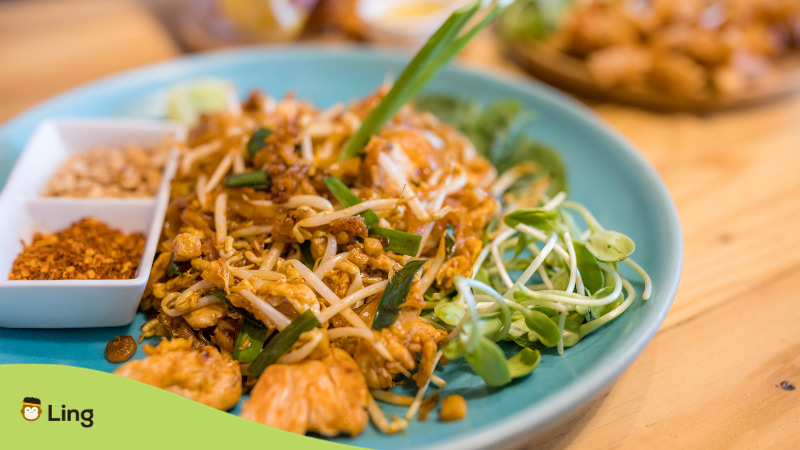
What Are Thai Noodles?
In Thailand, rice (ข้าว) is the staple element of foods as in many other Asian cultures. Therefore rice noodles (ก๋วยเตี๋ยว), as well as wheat noodles, are very common in main dishes. Fresh rice noodles are made from fermented rice, and they are usually served with soup, spicy curries, or salads. Other rice noodles, adapted from Chinese cuisine, consist of three types:
- เส้นใหญ่ (sên yài) – Thick, wide and flat rice noodles
- เส้นเล็ก (sên lék) – Thin and flat rice noodles
- เส้นหมี่ (sên mìi) – Vermicelli rice noodles
- เส้นหมี่เหลือง (sên mìi lʉ̌ang) – Egg noodles (yellow)
There is also a noodle type called wun sen (วุ้นเส้น), known as glass noodles in English. They are such thin noodles that they look transparent. If you are curious, they are made from mung bean flour.
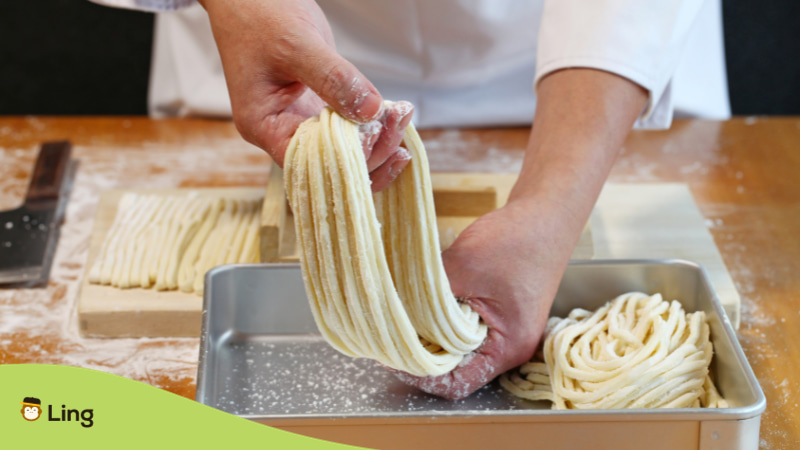
How To Make Thai Noodles?
1. Ageing Phase
First things first, raw rice must be aged for several months by keeping it in storage so that the rice goes into some physiochemical changes in a natural way.
2. Fermentation Phase
After the rice is aged, it is put in water for a few days, and this way, it goes through a fermentation process thanks to the lactic acid bacteria and yeast in the water.
3. Wetmilling Phase
Once the fermentation is completed, the rice is processed into wet-milled flour by rolling it through a mill while periodically adding water.
4. Pre-Gelatinization Phase
Rice doesn’t contain gluten. That’s why its structure is hard to bind. So, it goes through a process called pre-gelatinization, which helps it to form a cohesive, sticky dough.
Boiling water or steam is added to the rice flour to elongate the natural starch in rice so that you can bind the dough together. In this phase, tapioca, potato, or cornstarch can be added to give the noodles a chewier texture and glossier appearance.
5. Shaping Phase
After the dough is ready, it is molded into a noodle shape. If you want a flat rice noodle, the dough must be pressed into sheets and cut into long strips. However, if you want a typical noodle, the dough must be molded into boiling water and cooked for a few minutes, then the cooked rice noodles need to be cooled immediately in a bowl full of cold water. This heating and cooling part is seen as an important process.
6. Drying Phase
The Thai noodles need a final washing to make the surface smooth and clean, then leave it to dehydrate. Once they are dried, you can store them in jars or wrap them in craft paper or plastic bags. Don’t forget that they still need to be rehydrated before cooking.
5 Popular Noodle Dishes In Thai
Now that we have learned how Thai noodles are made let’s look at some popular Thai dishes that you can prepare with noodles. There are five noodle dishes that Thai people love. You can modify these traditional Thai dishes as you like.

Pad Thai (ผัดไทย)
Pad Thai is a stir-fried rice noodle dish, and it is absolutely delicious street food in Thailand. It is usually made with Thai noodles, shrimp, peanuts, scrambled eggs, bean sprouts, and other vegetables. After the ingredients are fried and ready, it is tossed in a special sauce, which gives the dish its signature salty flavor with a bit of sweetness.
Main Ingredients: Thai rice noodles, eggs, tofu, tamarind juice, palm sugar, soy sauce, cooked shrimp, dried shrimp bean, garlic, red pepper flakes, lime, and peanuts.
Fun Fact: Pad Thai was listed at number five on a list of “World’s 50 most delicious foods” prepared by CNN Go in 2011.

Pad Kee Mao (ผัดขี้เมา)
Pad kee mao is also known as drunken noodles. As stated in the name, it is a stir-fried dish because pad means ‘to stir-fry’ in Thai. The dish is ubiquitous in restaurants and street vendors in Thailand.
Main Ingredients: Wide rice noodles, soy sauce, fish sauce, garlic, green onions, meat, seafood, bean sprouts, red bell pepper, any vegetable, Chili or red pepper flakes, and holy basil.
Fun Fact: There is a local story about this dish. A woman was upset about her husband’s over-drinking and his behavior afterward. When she was cooking his favorite noodles, she added plenty of spices to the dish. She believed that the mixture of spices with some chilies would fix her husband’s behavior.
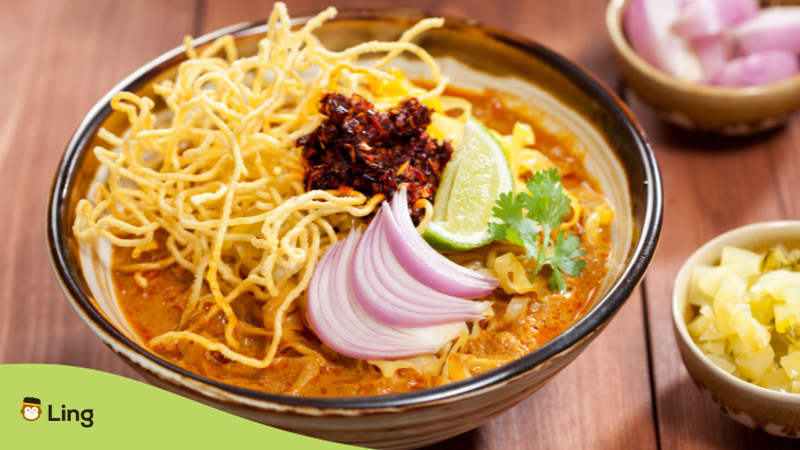
Khao Soi (ข้าวซอย)
Khao soi is a great recipe, and it means ‘cut rice’ in English. Traditionally, the dough for the rice noodles is spread out on a cloth stretched above boiling water. After steaming the sheet noodle, it is rolled and cut with scissors or hand-sliced. Rice noodles are served in a soup and topped with meat and tomato sauce.
Main Ingredients: Hand-cut rice noodles, eggs, coconut milk, curry soup base, and meat.
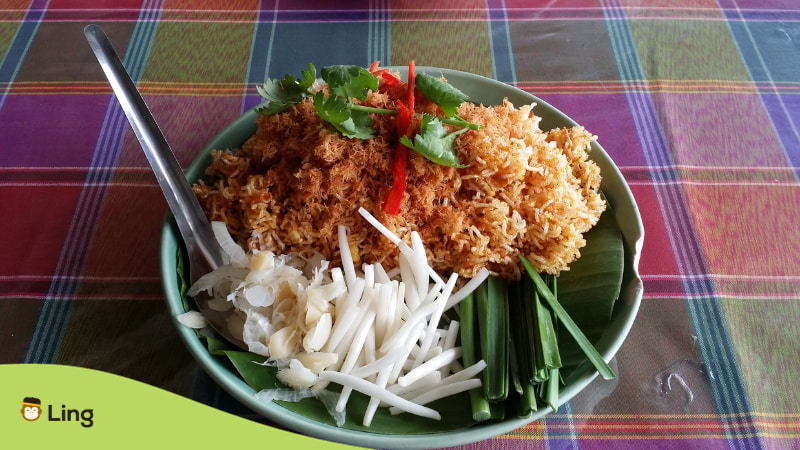
Mi Krop (หมี่กรอบ)
Mi krop means ‘crisp noodles’ in English. It is made with thin rice noodles and a mostly sweet sauce but can be balanced with a sour flavor, such as lemon or lime juice. The sour flavor comes from the peel of a Thai citrus fruit called som sa. Thai restaurants prefer to serve warm.
Main Ingredients: Rice noodles, sweet-sour sauce.
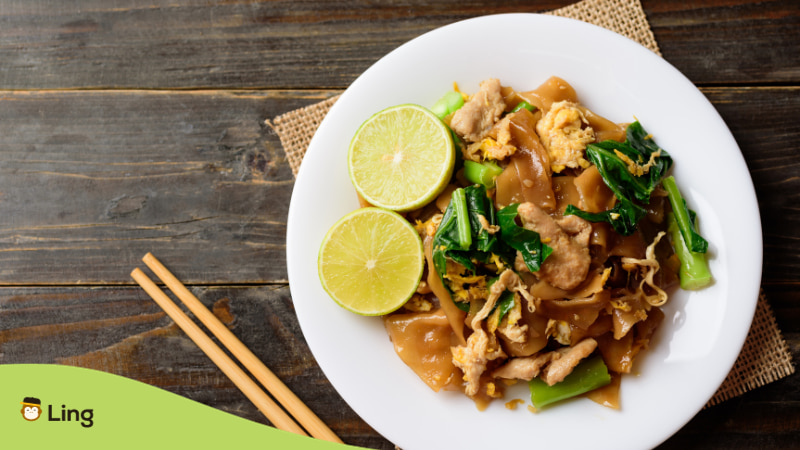
Pad See Ew (ผัดซีอิ๊ว)
Pad see ew is also a stir-fried noodle food. It can be translated as ‘fried with soy sauce. You can eat this food from street vendors as well as popular restaurants. Many Thai people love it. The origin of this food is believed to trace back to Chinese culture. The Thai noodles are prepared in a black soy sauce to get a caramelized effect. The dish may look like it is burnt, but it is one of the features of the dish.
Main Ingredients: Shahe fen, black soy sauce, garlic, Chinese broccoli, eggs, green onions, meat (commonly pork, beef, or seafood), and tofu.
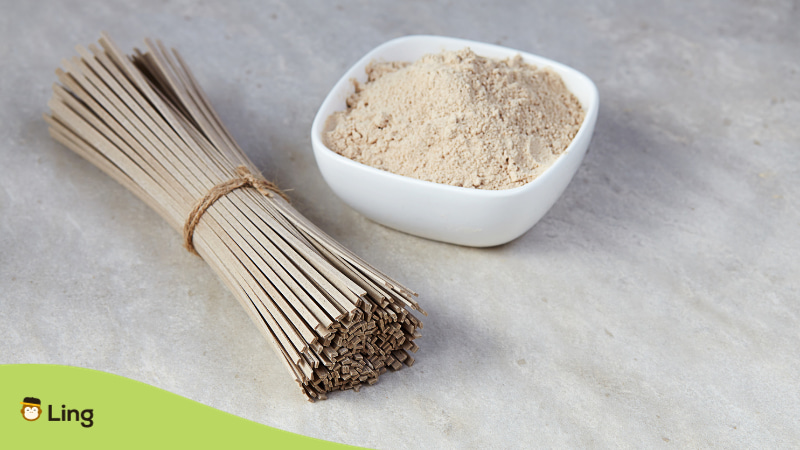
The Origin Of Noodles
Noodles are a kind of food made of dough, and they are shaped in long and thin strings. In some Asian regions, people prefer to make them handmade at home, but many brands manufacture instant noodles and import them worldwide. The material composition and making process differ from one cuisine to another. Noodles are a staple food in many Asian cultures, such as Chinese noodles, Japanese noodles, Korean noodles, and Thai noodles.
The oldest written information about noodles is found in a book that dates back to 25–220 CE during the domination of the Han dynasty. That’s why the origin of noodles is believed to belong to China, and other Asian cuisines adopted it in their cultural dishes.
Thai Noodles Vocabulary
Ordering some Pad Thai with that special Thai soup? Here are Thai Noodles vocabulary that you should try memorizing. The Thai people will appreciate you learning their language and even give back that signature smile! Learn to practice these words while you’re at home, on the go, or during your lunch break!
Do You Want To Learn Thai? Check Out The Ling App
If you are looking for an efficient resource for learning the Thai language, the Ling app is here for you!
The Ling app is a language learning app that has been used and loved by millions of language learners around the world. There are more than 60 foreign languages, including Thai, waiting for you in the app. It contains practical language lessons and game-like exercises to practice. You can learn any language by using the Ling app for 15 minutes a day.
What are you waiting for? Download Ling from the App Store and Play Store for free!
Updated by Mei and CJ.
